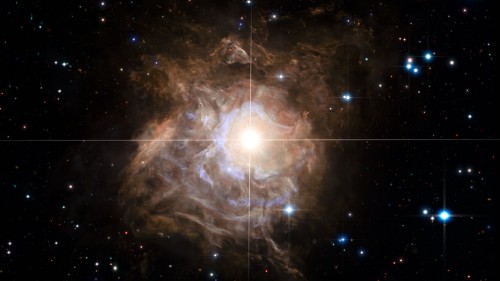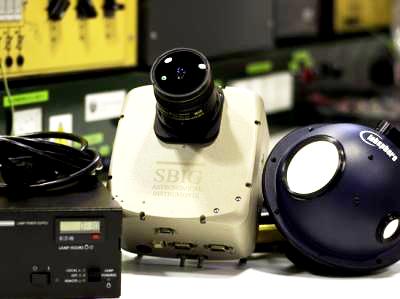Tag archives: images
Award-winning ‘Bailys Beads’, schoolyard accelerators , pulsar poems and more
By Tushna Commissariat
Its officially that time of the year again when we can marvel at this year’s winners of the Insight Astronomy Photographer of the Year 2016. The awards ceremony, held at the Royal Greenwich Observatory, has unveiled some truly spectacular and ethereal shots of our universe. The overall winner this year is a truly amazing composite image of the 2016 total solar eclipse that shows the ‘Baily’s Beads’ phenomenon and was taken by photographer Yu Jun in Luwuk, Indonesia. In the video above, the judges explain why this particular image was the main winner for the year.
View all posts by this author | View this author's profile
Season’s greetings

A star glowing in the night. (Courtesy: ESA/Hubble)
By Hamish Johnston
Things are winding down for the holidays at Physics World and this afternoon the team will be enjoying our Christmas lunch at a local brewpub. Hopefully they will have a festive ale or two on tap! To brighten up this festive blog, we have chosen this stunning image of the variable star RS Puppis as our Christmas picture. It was taken by the Hubble Space Telescope and shows starlight reverberating through the foggy environment around the star.
View all posts by this author | View this author's profile
Eyeing light pollution
By Tushna Commissariat

The newly patented all-sky camera (Courtesy: University of Granada)
Researchers in Spain have developed a small and light device that can quickly and accurately measure the light-pollution levels or artificial night-sky background brightness for a given location. The team, led by Ovidio Rabaza from the Department of Civil Engineering at the University of Granada, has developed a portable system that includes an all-sky camera and several interference filters that can be easily transported and can be used anywhere.
Currently, methods to measure light pollution that affects the night sky involve using complex techniques such as astronomical photometry, which requires large-scale and expensive equipment generally housed in observatories, according to the researchers. According to the team, the new system is “clearly innovative because, for the first time, relative irradiance and sky background luminance have been measured through wide-field images, of all the sky, instead of using more conventional methods”.
View all posts by this author | View this author's profile
Hubble – one million and going strong
By Tushna Commissariat
I have already raved on about the awesomeness of the Hubble Space Telescope in my blog entry about its 21st anniversary in April this year. Now, the telescope has crossed yet another milestone – on Monday 4 July the Earth-orbiting observatory logged its one-millionth science observation! The image above is a composite of all the various celestial objects ranging through stars, clusters, galaxies, nebulae, planets, etc that Hubble has catalogued over the years. Click on the image for a hi-res version. [Credit: NASA, ESA and R Thompson (CSC/STScI)]
The telescope has had a significant impact on all fields of science from planetary science to cosmology and has provided generations with breathtaking images of our universe ever since it was launched on 24 April 1990 aboard Discovery’s STS-31 mission.
Hubble’s counter reading includes every observation of astronomical targets since its launch. The millionth observation made by Hubble was during a search for water in the atmosphere of an exoplanet almost 1000 light-years away from us. The telescope had trained its Wide Field Camera 3, a visible and infrared light imager with an on-board spectrometer on the planet HAT-P-7b, a gas giant planet larger than Jupiter orbiting a star hotter than our Sun. HAT-P-7b has also been studied by NASA’s Kepler telescope after it was discovered by ground-based observations. Hubble now is being used to analyse the chemical composition of the planet’s atmosphere.
“For 21 years Hubble has been the premier space-science observatory, astounding us with deeply beautiful imagery and enabling ground-breaking science across a wide spectrum of astronomical disciplines,” said NASA administrator Charles Bolden. He piloted the space shuttle mission that carried Hubble to orbit. “The fact that Hubble met this milestone while studying a far away planet is a remarkable reminder of its strength and legacy.”
Hubble has now collected more than 50 terabytes – the archive of that data is available to scientists and the public at http://hla.stsci.edu/
And take a look at this Physics World article by astrophysicist Mark Voit where he looks at the most iconic images Hubble has produced over the years – Hubble’s greatest hits
The NASA video below was created last year for the 20th Hubble anniversary celebration and tells you how you could send a message to Hubble that will be stored in its archive.
View all posts by this author | View this author's profile
Through two mirrors, brightly

Hubble’s “Rose of Galaxies” anniversary image
(Courtesy: NASA, ESA, A Riess (STScI/JHU), L Macri (Texas A&M University) and Hubble Heritage Team (STScI/AURA))
By Tushna Commissariat
Millions of people worldwide have exclaimed in awe and wonder at the images that the Hubble Space Telescope (HST) has been producing for more than two decades. The satellite has had a significant impact on all fields of science from planetary science to cosmology ever since it was launched on 24 April 1990 aboard Discovery’s STS-31 mission. In a bid to celebrate the 21st anniversary of the HST, astronomers at the Space Telescope Science Institute in Baltimore, Maryland, in the US pointed Hubble’s eye at a particularly magnificent cosmic phenomenon – a pair of interacting galaxies in the shape of a rose.
The newly released Hubble image shows two interacting galaxies known as Arp 273. The larger of the spiral galaxies – UGC 1810 – has a disc that is being distorted into a rose-like spiral thanks to the gravitational tidal pull of the companion galaxy below it, known as UGC 1813. The smaller companion shows signs of intense star formation at its nucleus, quite possibly triggered by the smaller galaxy actually passing through the disc of the larger galaxy. A veil of bright and hot young blue stars glows across the top of the dancing discs.
Arp 273 lies in the constellation Andromeda and is about 300 million light-years away from Earth. Though the galaxies are separated from each other by tens of thousands of light-years, they are connected by a tidal bridge of material between them that formed post interaction.
Take a look at the gorgeous image (above) and a video (below) zooming into the region of the galaxies.
In other space-related news, the final launch of the space shuttle Endeavour will take place tomorrow, 29 April, from Florida’s Space Coast in the US. So while Britons and many others all over the world will be watching the royal wedding, Kennedy Space Center is anticipating the arrival of an estimated half a million onlookers, eager to watch the space shuttle lift off one more time. Endeavour, first launched in May 1992, is expected to carry six astronauts, a cargo bay full of spare supplies and a $2bn astrophysics experiment to the International Space Station.
To look at some interesting images in the follow-up to the launch, look here: http://www.space.com/11221-photos-space-shuttle-endeavour-final-mission-sts134.html
View all posts by this author | View this author's profile
